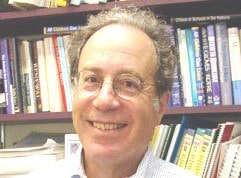 Dr. Robert Schwartz of Harvard says that perhaps our education system should focus more on the math that students are more likely to use in their civic and work lives.
Dr. Robert Schwartz of Harvard says that perhaps our education system should focus more on the math that students are more likely to use in their civic and work lives.Community colleges expect little of first-year students — and get even less, concludes the National Center on Education and The Economy.
The report paints a grim picture.
High school graduates have trouble reading textbooks written at the 11th- to 12th-grade level, so instructors provide study aids to help poor readers get by. Students do little writing. When they do write, “instructors tend to have very low expectations for grammatical accuracy, appropriate diction, clarity of expression, reasoning and the ability to present a logical argument or offer evidence in support of claims.”
Despite taking high school algebra, geometry and often advanced algebra, most students are placed in remedial math. They’re not prepared for “college math,” which amounts to “Algebra 1.25,” basic algebra with a bit of geometry and statistics. Yet what students most need to succeed in college courses is mastery of “middle school mathematics, especially arithmetic, ratio, proportion, expressions and simple equations.”
Community colleges enroll 45 percent of U.S college students. About half hope to earn a bachelor’s degree, while the rest are pursuing a vocational credential, NCEE estimates.
It’s not enough for community colleges to raise expectations, the report concludes.
A large percentage of high school graduates do not meet the expectations that community colleges have of them. The nation may have to learn to walk before it runs, which means that it is important, first, to enable high school students to meet the very low standards before ratcheting those standards up.
Common Core Standards, if implemented well, will help, eventually, the report concludes. But there’s a long way to go.
Researchers analyzed textbooks, tests, assignments, student work and grading at seven community colleges in different states. The study focused on general education and popular career programs: accounting, automotive technology, biotech/electrical technology, business, criminal justice, early childhood education, information technology/computer programming 1 and nursing.
Only one program at one college required mastery of advanced algebra, the study found.
Increasingly, high schools are requiring students to take Algebra I, Geometry and Algebra II, with hopes they’ll make it to Calculus. That should be only one option, the report recommends.
Mastery of Algebra II is widely thought to be a prerequisite for success in college and careers. However, research shows that that fewer than five percent of American workers and an even smaller percentage of community college students will ever need to master the algebra to calculus sequence in their college or in the workplace.
Students shouldn’t take algebra until they really understand middle-school math, the report advises. If they wait until 10th grade, that’s OK. They can study statistics, data analysis, applied geometry and/or mathematical modeling to prepare for a range of careers.
States should “build alternative math pathways through the last two years of high school that are aligned with student interests and career plans,” says Harvard Education Professor Robert Schwartz. “If the report’s assertion is correct — that only 5 percent of jobs require the mathematics embodied in the calculus pathway — then our education system should focus more on the mathematics that most young people will actually use in their civic and work life, e.g. statistics, data, probability.”
However, the path to 12th-grade calculus usually starts with eighth-grade algebra. At 12 or 13, students would have to decide whether they’re aiming for a university degree in engineering or science. Imagine a STEM-prep track for 5 percent of students — or even 20 percent — with everyone else preparing for a low-tech university degree or a community college job training program.
Joanne Jacobs writes the Community College Spotlight for The Hechinger Report.


















